Safe Plants for Amphibian Enclosures (with Pictures)
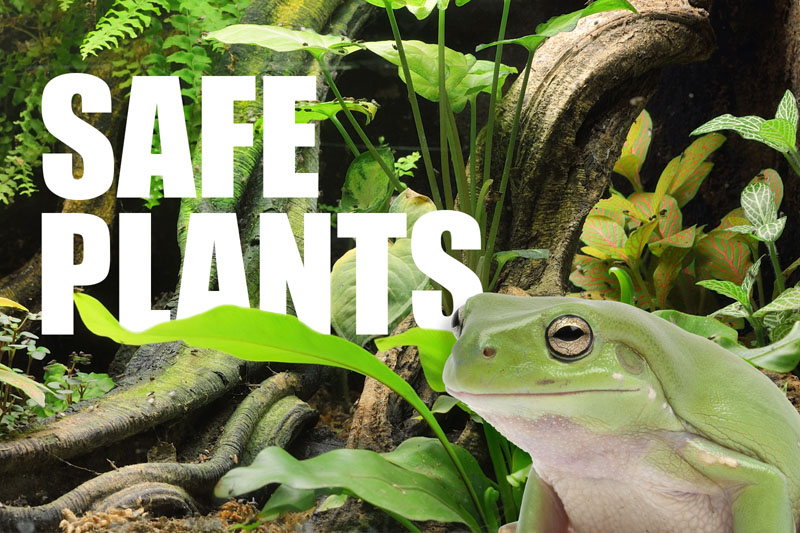
Selecting live plants for your reptile or amphibian enclosure is a fun task but it’s not as simple as it might seem. One has to consider the environmental conditions of the habitat and the safety of the inhabitant(s).
Using toxic plants can have a negative impact on the health of your pet frog, toad, or salamander. For this reason, I’ve compiled a list of safe, popular plants used in the reptile and amphibian hobby.
Table of Contents
19 Safe Plants for Amphibian Terrariums
This is an ever-expanding list of safe terrarium plants. I’ll update this list from time to time. Feel free to leave a comment in the section below if I left out one of your favorite plants.
| Image | Name / Type |
|---|---|
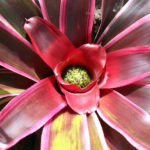 | Bromeliad (Neoregelia) It’s an epiphyte but can grow in soil. Photo by Codiferous (CC BY-SA 3.0) |
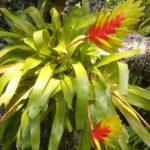 | Bromeliad (Vriesea) Some of the largest species of bromeliads. Photo by BotBln Wikipedia (CC BY-SA 3.0) |
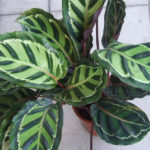 | Calathea (Calathea roseopicta) Also called prayer plants. Photo by Jerzy Opiola (CC BY-SA 4.0) |
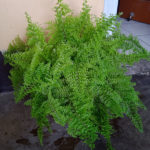 | Fern (Nephrolepis exaltata) Known as sword fern or Boston fern. Photo by Pallabi Dutta.Baruah (CC BY-SA 4.0) |
 | Fern (Asplenium nidus) Known as a bird’s nest fern. Tropical epiphyte Photo by David Eickhoff (CC BY-NC-SA 2.0) |
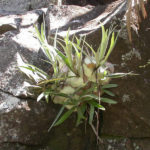 | Fern (Platycerium veitchii) Known as silver elkhorn fern or staghorn fern. Photo by John Jennings (CC BY 2.0) |
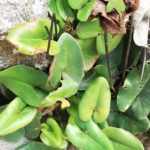 | Fern (Hemionitis arifolia) Known as heart leaf fern. Photo by Yercaud-elango (CC BY-SA 4.0) |
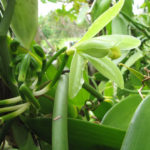 | Orchid (Vanilla planifolia) Known as a vanilla orchid. Photo by Forest and Kim Starr (CC BY 2.0) |
 | Orchid (Macodes petola) Known as jewel orchid. Photo by JMK Wikipedia (CC BY-SA 3.0) |
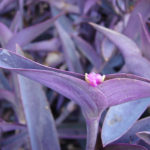 | Tradescantia (Tradescantia pallida) Known as purple heart or purple spiderwort. Photo by Forest and Kim Starr (CC BY 3.0) |
| Peperomia (Peperomia trinervula) One of many peperomia species. | |
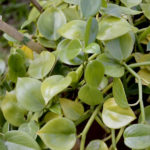 | Peperomia (Peperomia scandens) Known as cupid peperomia. Photo by Biswarup Ganguly (CC BY 3.0) |
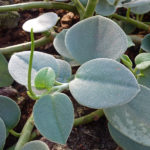 | Peperomia (Peperomia incana) Known as felted peperomia or Amazon Fuzz. Photo by James Steakley (CC BY-SA 3.0) |
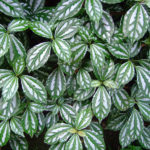 | Pilea (Pilea cadierei) Known as watermelon Pilea and Aluminum plant. Photo by Kai Yan, Joseph Wong (CC BY-NC-SA 2.0) |
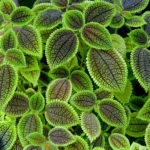 | Pilea (Pilea involucrata) Known as friendship plants. Photo by Diego Delso (CC BY-SA 4.0) |
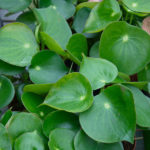 | Pilea (Pilea peperomioides) Known as Chinese Money Plant Photo by Stefano Flickr (CC BY-NC-SA 2.0) |
 | Pothos (Epipremnum aureum) Commonly known as Golden Pothos. Photo by Dinesh Valke (CC BY-SA 2.0) |
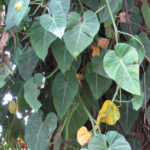 | Philodendron (Philodendron cordatum) An epiphyte, great for growing on hardscape. Photo by Forest and Kim Starr (CC BY 3.0 US) |
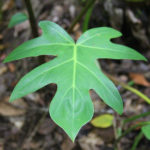 | Philodendron (Philodendron bipennifolium) Known as lacy tree philodendron, selloum, and horsehead. Photo by Joan Simon (CC BY-SA 2.0) |
After you look over the list, continue reading to learn about the benefits of real plants, things to avoid, and tips for placing your first real plant in a terrarium.
Benefits of Real Plants in a Terrarium
Using real, live plants has several benefits for any reptile or amphibian enclosure. If the visual appeal of using real plants isn’t enough, consider how plants can positively impact the overall health of your terrarium.
As your beloved amphibian urinates and defecates on the substrate in their enclosure, the pH level slowly grows towards the acidic side. Over time, it builds and builds to the point where it becomes harmful to the inhabitants. This is especially true for amphibians, who have delicate, semi-permeable skin.
Real plants help to level the pH scale in the substrate. They use nitrates as a source of food in growth. Combining real plants with microfauna is an even better way to keep the substrate healthy.
Aside from this, real plants offer an ever-changing landscape and plenty of hiding opportunities for frogs, toads, or salamanders.
Interestingly enough, amphibians are more likely to make themselves seen when they know there are plenty of nearby hiding places! Both real and fake plants help with this.
The Plants (and Soils) to Avoid
Now that you know a few benefits of using real plants, let’s discover the things to avoid. First and foremost, toxic plants can have a negative impact on amphibians within a terrarium.
Toxic Plants
Pet amphibians are generally kept in small enclosures. Because of this, they’re heavily dependant on their surroundings. If, for example, there was a toxic plant in their enclosure, they will have a difficult time avoiding it.
In contrast, wild amphibians have plenty of room to move around and avoid toxic plants. Some plants are harmful on touch while others are only harmful when ingested.
Now, amphibians are mostly carnivores. They eat living invertebrates like crickets, mealworms, flies, etc. The insects they do eat, however, are often-times herbivores. So, if your pet amphibian eats a cricket who recently nibbled on a toxic plant, this can be problematic.
For these two reasons, it’s especially important to avoid planting toxic plants in your pet’s terrarium.
There are quite a few harmful plants. So many, in fact, that I won’t list them here. Instead, I’ll encourage you to focus on the safe, non-toxic plants listed above.
Potential Impaction and Chemical Problems in Certain Types of Soil Mixes
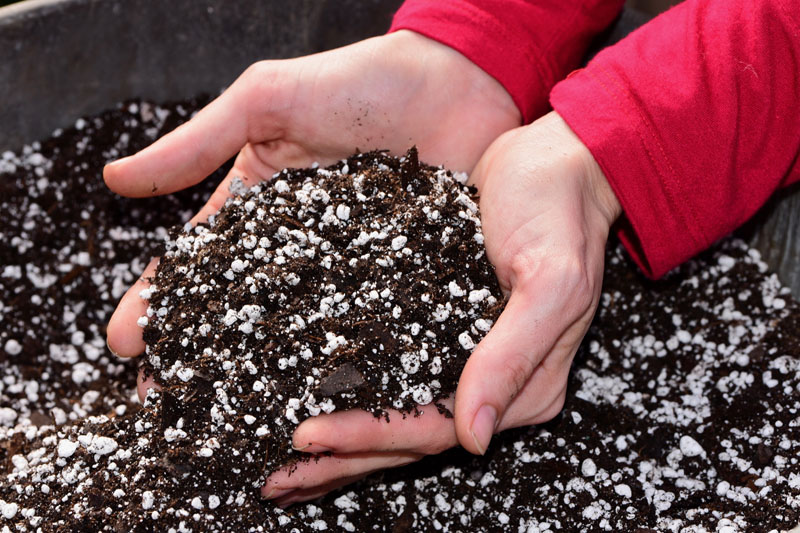
There is one more thing to consider when using real plants and that’s the soil they’re grown in. Certain brands of “plant food” is beneficial to flowers but potentially harmful to amphibians.
Perlite and vermiculite are commonly used in soil mixtures for varying reasons. In the case of Perlite, it is mixed with soil to improve aeration. If you’ve never heard of it, you may have seen it without knowing what it was. Perlite is white, small, and looks similar to foam.
The problem with these types of things is impaction. Impaction happens when an animal eats something it can’t easily digest. In the case of reptiles and amphibians, where they’re eating crickets or mealworms off the substrate, impaction is a common problem.
A healthy amphibian can digest and pass pieces of substrate. Captive amphibians may struggle to pass perlite.
You don’t need to avoid buying plants rooted in soil with perlite. I do, however, advise you to completely remove the plant from the soil first. Wash the roots before planting in your amphibian’s terrarium.
Before You Plant… Plants
Now that you know what to avoid, let’s discuss a few more important topics to remember before you go shopping for terrarium plants.
Lighting Requirements
Real plants need light to survive. Most, in fact, need something better than a heat bulb too. You would do well to get a specially made grow-light for many plants.
T5 and T8 bulbs are great for growing plants indoors! This leads to more complications. The reason is that some lights are harmful to amphibians. Specifically, high-powered UVB lights are almost always harmful to amphibians (especially tadpoles).
Lights suitable for growing plants with UVB 5.0 or no UVB at all are best. The topic of UVB for reptiles and amphibians is incredibly complex[1], not to mention the topic of lights for growing plants. I can’t cover everything here. Just know that you will need a lighting setup suitable for real plants. There are many options available!
Related: Do Pacman Frogs Need UVB?
Soil (Nutrients) Requirements
Live plants obtain nutrients from the substrate (soil) they’re rooted in. Because of this, you’ll want to use a specially formulated mixture in your pet’s enclosure. Something suitable for growing real plants.
I recommend an ABG (Atlanta Botanical Garden) mix. ABG is a common acronym in the reptile and amphibian hobby. It’s a mixture of sphagnum moss, fern, orchid bark, peat moss, and charcoal. There are many variations but this mixture works extremely well for growing live plants.
In short, trying to grow real plants in your standard coco-fiber substrate won’t cut it. You need something like an ABG mix.
Minding The Roots with Burrowing Amphibians
One thing to consider when using real plants is the placement within the enclosure. This is especially important when the terrarium houses a burrowing species; a Pacman Frog, Tomato Frog, or most Toads, for example.
Their burrowing can potentially damage the roots of your plants. For this reason, I recommend that you plan out the placement of your plants in such a way that burrowing species won’t have a negative impact on your plants.
In my son’s Pacman Frog enclosure, I separated a fern plant from his open substrate area by placing a cork bark flat as a divider. I’ve seen him hopping around near the fern but it’s difficult for him to burrow there. He usually burrows in the open area.
Little tricks like this will save you the headache of replacing plants.
Do You Have The Right Climate?
Last but definitely not least is climate. You absolutely want to consider the climate needs of the plants you’re using! Buy tropical plants for a tropical terrarium. Don’t buy arid plants for a tropical terrarium; they will die.
The type of environment will be dictated by the type of pet you have, of course. Look at your pet’s needs first; the temperature, humidity, length of the day, etc. With this in mind, seek out plants that grow well in this type of environment.
TLDR; Safe Plants for Amphibians
Amphibians are delicate animals. They have semi-permeable skin which makes them especially vulnerable to toxic plants. Some toxic plants are dangerous when touched and others when ingested. Both should be avoided, however, because amphibians typically eat insects that are largely herbivores.
Using real plants presents more complications because they need special lighting and soil. Moreover, you want to carefully plan your terrarium setup. Burrowing amphibians can damage the roots of living plants and you should only use the types of plants that will survive in your terrarium’s climate. For example, don’t put a tropical plant in an enclosure with an arid climate. It won’t get enough water.
Finally, see the table at the top of the page for a list of non-toxic plants that are popular in the hobby.
References
- Baines, F. M. (2016, January 31). How much UVB does my reptile need? The UV-Tool, a guide to the selection of UV lighting for reptiles and amphibians in captivity. | Journal of Zoo and Aquarium Research. The Journal of Zoo and Aquarium Research. https://www.jzar.org/jzar/article/view/150[↩]
